Hey everyone, my Dad @quailbreeder much like myself is somewhat of a 'bunny hugger' go figure where I inherited it eh.Just to be clear from the start. I did not take these pics. I am in Pretoria and he is in the Eastern Cape, but he did send these to me with his permission and blessings to post as he sadly no longer blogs!
How pretty is that first pic, gorgeous Ocean in the backdrop, clear blue skies. The Branches on the right are from a Norfolk Pine Tree, his parents are nesting at the very top, this is an annual affair and this is their offspring!
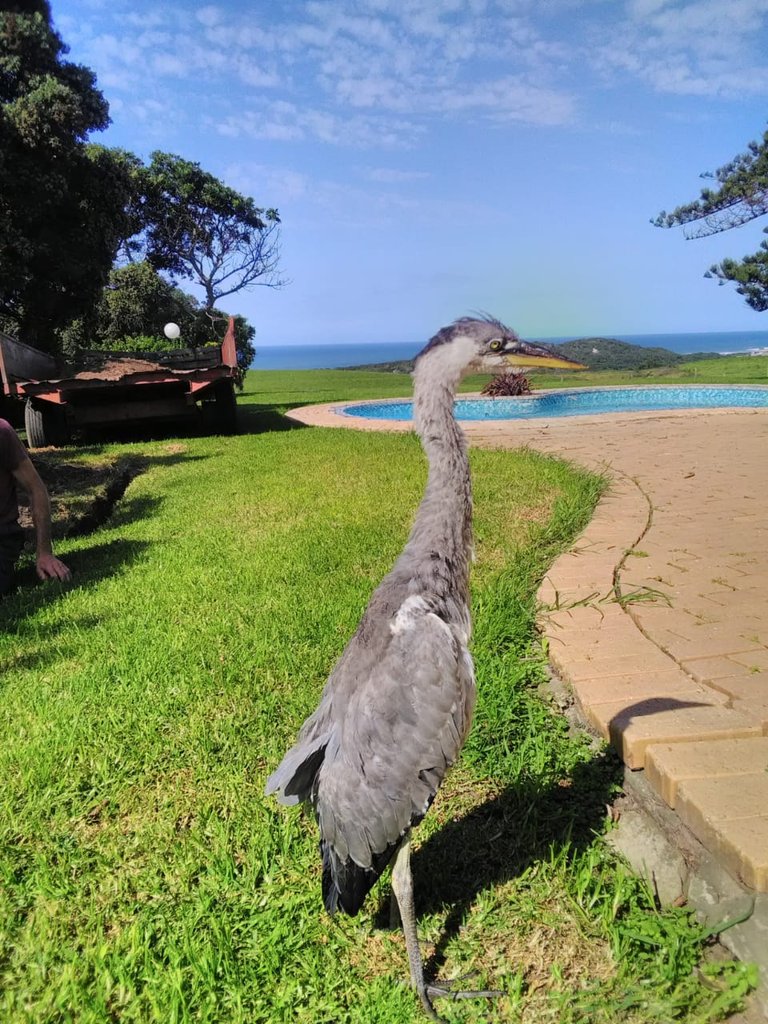
Myself my sister @buckaroo and Dad @quailbreeder are on a family whatsapp group. We were elated on this fine morning to receive these incredible pics of this amazing bird that Dad was trying to rescue. A gorgeous baby Heron.
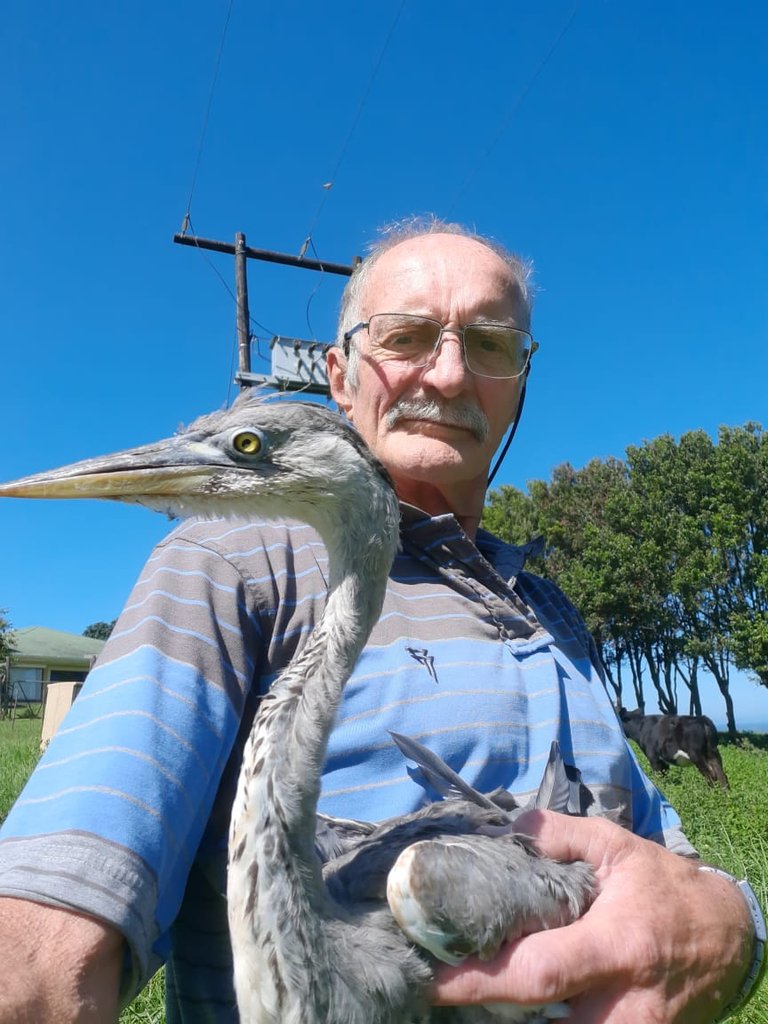
This chap had fallen out the Tree and his parents where no where near. The dogs were also taking a keen interest at which point Dad stepped in to intervene, the rescue effort was underway!
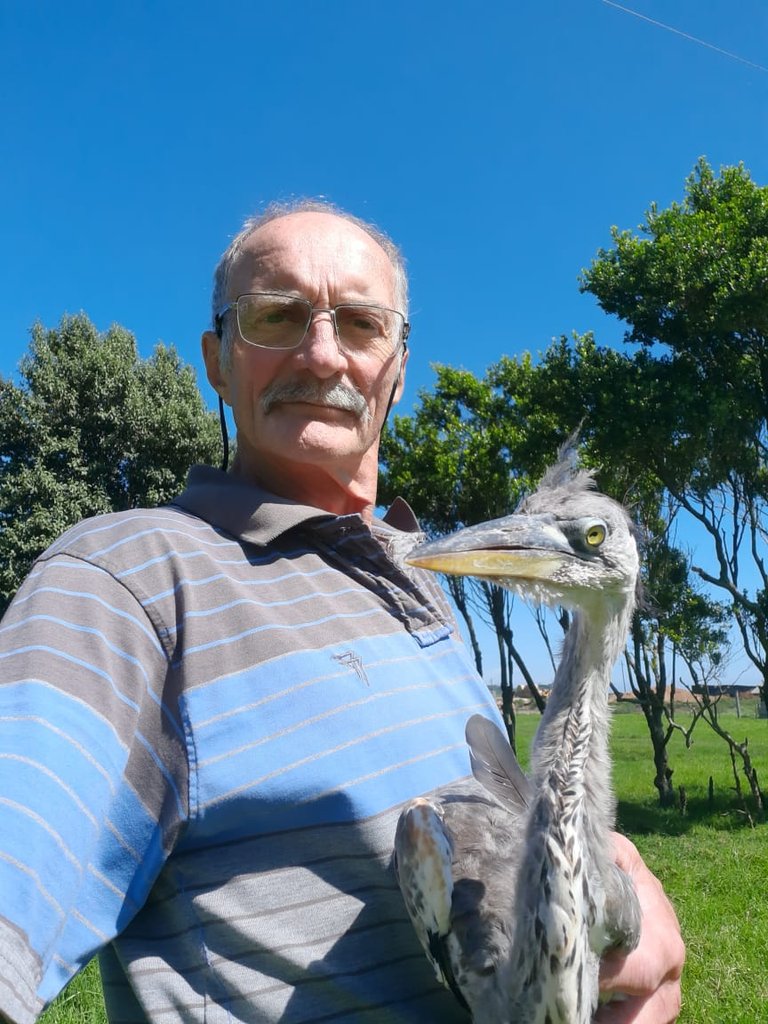
I have been doing a little research on this incredibe bird and from what I can tell this is a Black Headed Heron more here as per wikipedia.org
The black-headed heron (Ardea melanocephala) is a wading bird of the heron family Ardeidae, common throughout much of sub-Saharan Africa and Madagascar. It is mainly resident, but some west African birds move further north in the rainy season.
This species usually breeds in the wet season in colonies in trees, reedbeds or cliffs. It builds a bulky stick nest, and lays 2–4 eggs.
It often feeds in shallow water, spearing fish or frogs with its long, sharp bill. It will also hunt well away from water, taking large insects, small mammals, and birds. It will wait motionless for its prey, or slowly stalk its victim.
The black-headed heron is a large bird, standing 85 cm tall, and it has a 150 cm wingspan. It is nearly as large as the grey heron, which it resembles in appearance, although it is generally darker. Its plumage is largely grey above, and paler grey below. It has a powerful dusky bill.
The flight is slow, with the neck retracted. This is characteristic of herons and bitterns, and distinguishes them from storks, cranes, and spoonbills, which extend their necks. The white underwing coverts are striking in flight.
The call is a loud croaking.
https://en.wikipedia.org/wiki/Black-headed_heron
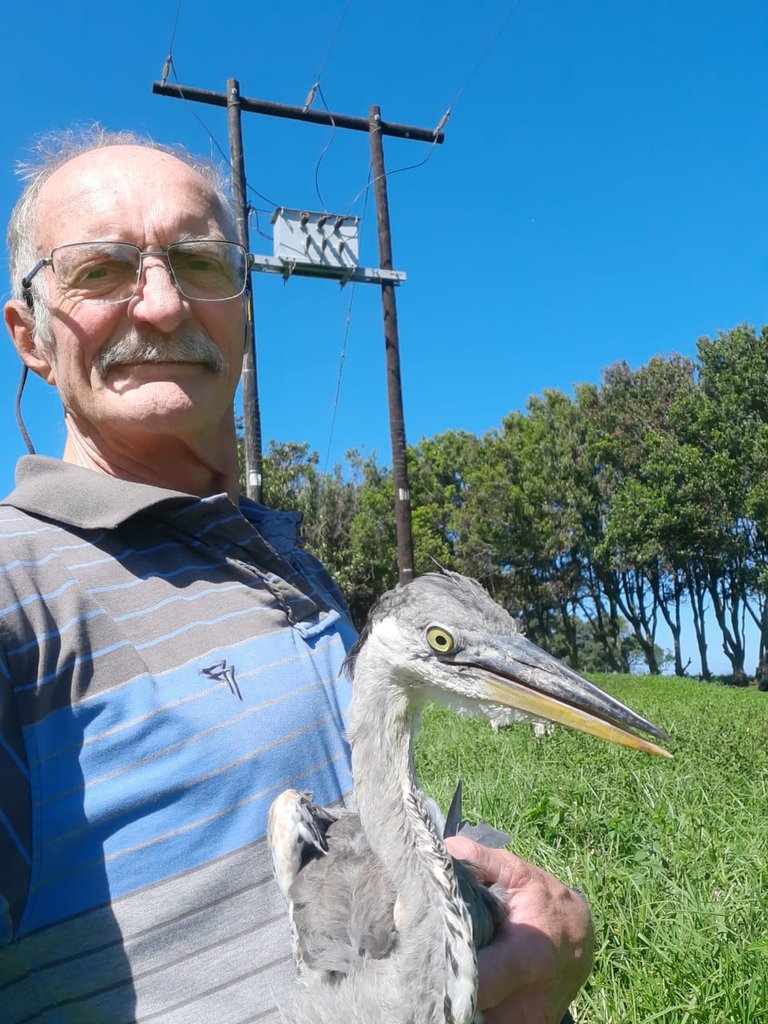
Any Ornithologists that can give any more info and advice to give this bird the best fighting chance do please comment below?
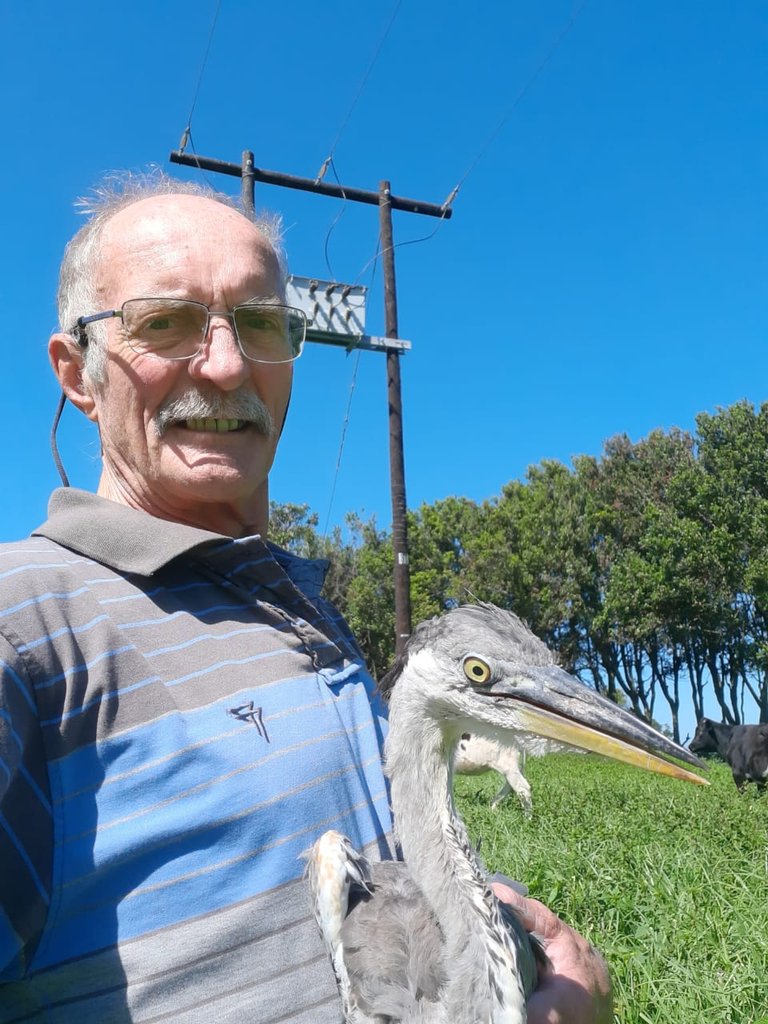
My Dad @quailbreeder has since been to the Vet and got specialist food to feed it until it gains it's strength and is able to fly!
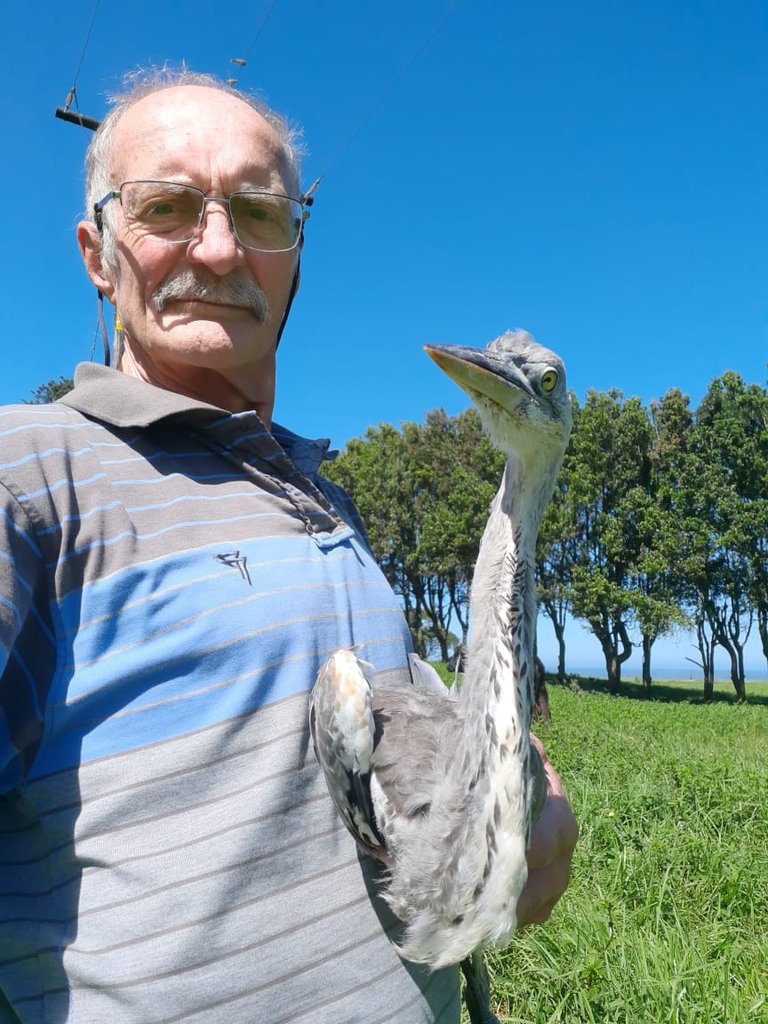
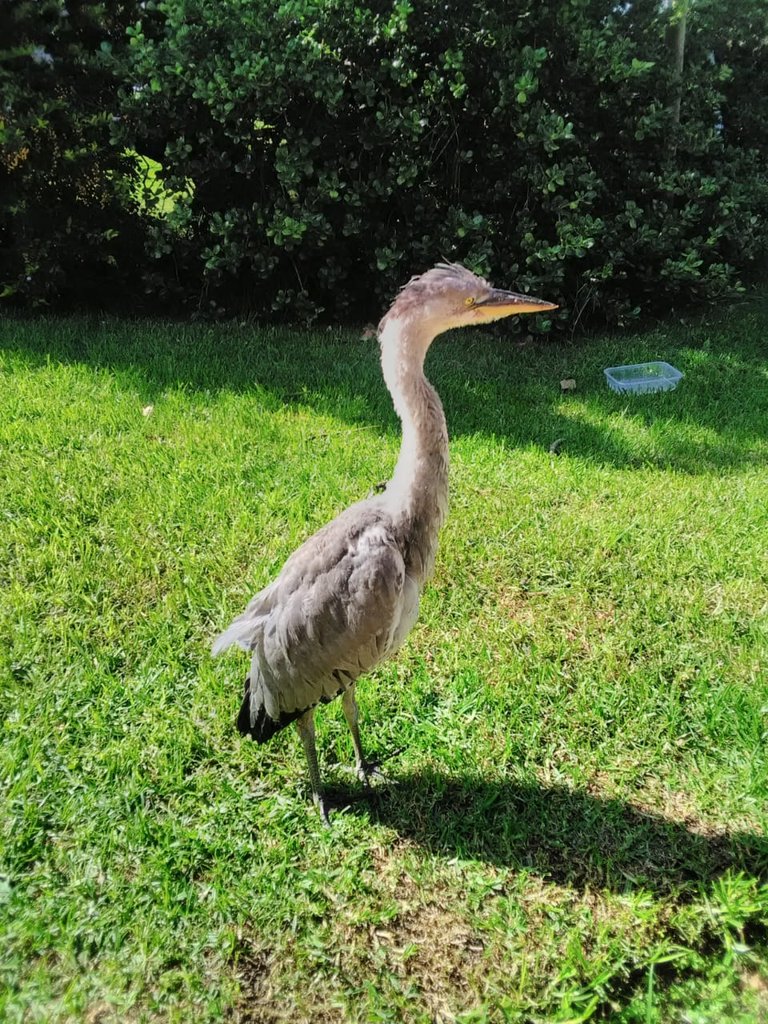
Credits: Wikipedia.org and my amazing father https://hive.blog/@quailbreeder
Nice job Dad @quailbreeder love you lots x.
I trust you have an incredible week. Love, Light and Blessings to you!
Cheer$;)
That must have been a BIG nest it fell out of! I hope everything goes well with it and it confess back each year to visit with its own mate.
@tipu curate
Upvoted 👌 (Mana: 0/4)
I did a post around 2 years ago on Steemit where I submitted these very parent birds to @papa-pepper Animal plant photo contest and won .. heheh.. thanks a ton much appreciated. Cheer$;)
📸 Congratulations! Your publication received a 100% Upvote 📸hello @craigcryptoking your post has been voted by @travel2019 follow me in my #traveling community
Wonderful post! Hope the little fellow thrives! #FEATHEREDFRIENDS
Hey thanks man thats magic, really appreciate that. Cheer$;)